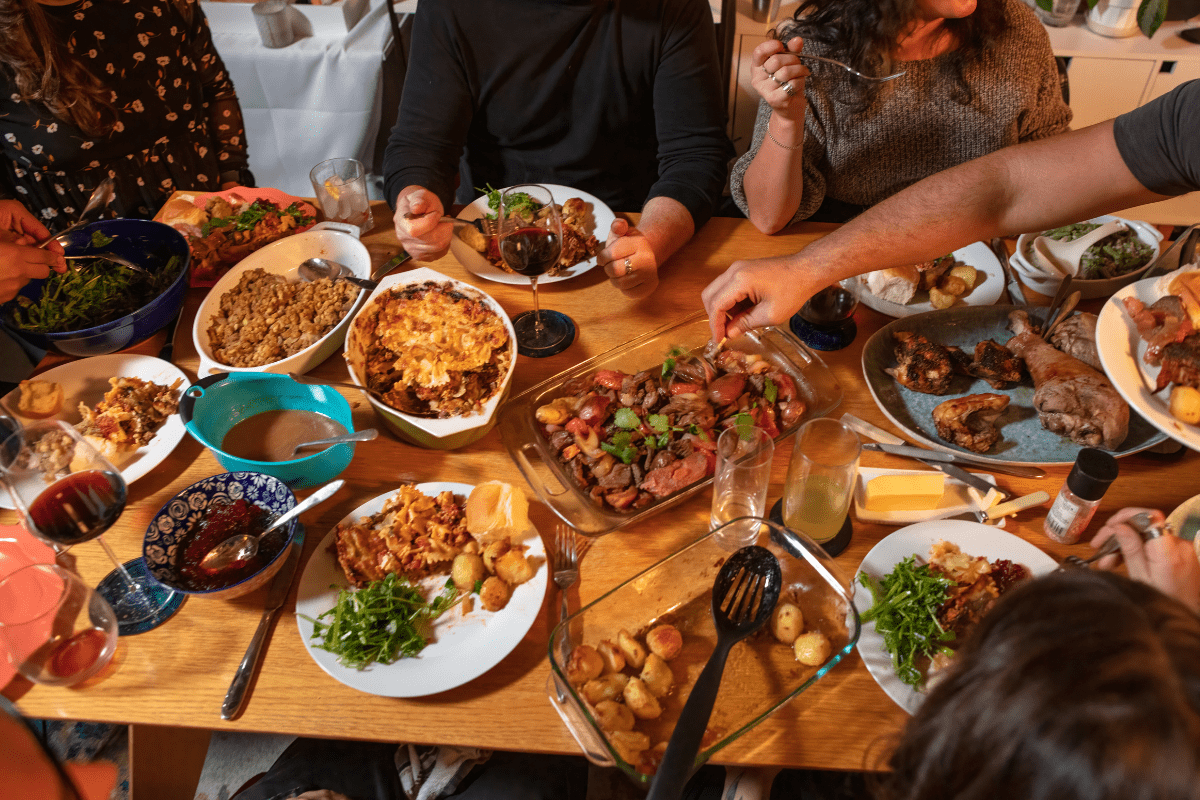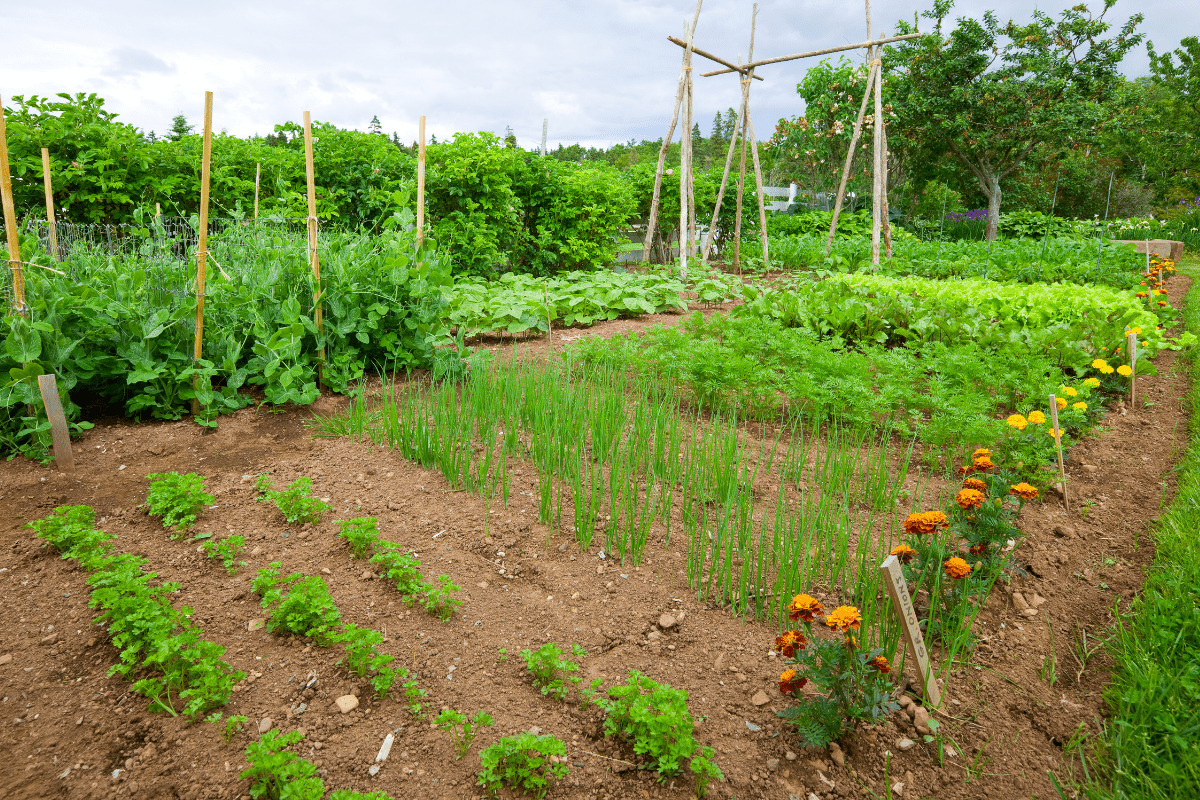Kentucky's food scene goes way beyond bourbon and fried chicken, though let's be honest, those are pretty fantastic starting points. With a $14.3 billion tourism industry that brought 80 million visitors last year alone, the Bluegrass State has quietly become a serious culinary destination. From moonshine-making techniques passed down through 11 generations to James Beard Award-winning restaurants serving Hot Browns, Kentucky's kitchen tells stories of innovation, tradition, and really good eating.
The economic powerhouse hiding in plain sight
Before we dive into the delicious details, let's talk numbers because they're genuinely impressive. Kentucky's bourbon industry alone generates $9.2 billion in economic impact, supporting 23,300 jobs with $1.6 billion in annual payroll. That's a lot of people making a living from what essentially started as frontier moonshine.
Food and beverage spending by tourists hit $2.6 billion in 2024, making it the largest category of visitor spending. The Kentucky Bourbon Trail attracts 2.5 million annual visitors and generates over $400 million in tourism revenue. So yeah, people are definitely coming for the food and drink.
The dishes that put Kentucky on the culinary map
The legendary Hot Brown sandwich
Let's start with Louisville's claim to fame: the Hot Brown. This isn't your average turkey sandwich… it's basically comfort food royalty served open-faced and drowning in cheese sauce. Created in 1926 by Chef Fred Schmidt at the Brown Hotel, it was originally an alternative to ham and eggs for guests at late-night dinner dances.
The numbers here are wild: the Brown Hotel serves approximately 27,000 Hot Browns annually, with production spiking to 1,000 during Derby week. That's a lot of Mornay sauce, folks. And speaking of Mornay sauce, that's your authenticity test right there. If your Hot Brown comes with processed cheese instead of real Mornay sauce, you're at a tourist trap.
Kentucky burgoo: the ultimate community stew
Burgoo is basically Kentucky's answer to "what happens when you throw everything good into one pot and let it simmer for hours." Originally made with whatever was available (including wild game like squirrel and opossum), modern versions stick to chicken, pork, beef, or mutton.
The key to good burgoo is patience and the right consistency. It should be thick enough for a spoon to stand upright… no joke, that's the actual test. The "Burgoo Triangle" stretching from Owensboro to Madisonville to Hopkinsville produces the state's most celebrated versions, so plan your road trip accordingly.
Derby pie: the dessert with legal protection
Here's where things get interesting from a trademark perspective. Derby Pie was created in 1954 by the Kern family at Melrose Inn, and they chose the name by literally drawing it from a hat. Fast forward to today, and Kern's Kitchen has filed over 25 lawsuits to protect the trademark.
Plot twist: the original recipe contains no bourbon, unlike many of the imitations you'll find elsewhere. So if you want the real deal, you'll need to buy it from Kern's Kitchen or make your own "chocolate nut pie" (the legally safe name everyone else uses).
Regional specialties worth seeking out
Kentucky's regions each have their own culinary personalities, shaped by geography, immigration patterns, and local ingredients.
Northern Kentucky's German influence shows up in:
- Goetta: breakfast sausage with oats
- Beer cheese: sharp cheddar spread
- Advanced brewing traditions
- Sophisticated preservation techniques
Eastern Kentucky's Appalachian heritage features:
- Wild game preparations
- Foraged ingredients like ramps
- Stack cake wedding traditions
- Moonshine-influenced cooking
Western Kentucky claims fame as:
- America's barbecue mutton capital
- Home of the Burgoo Triangle
- Hickory-smoking specialists
- Worcestershire-based dip inventors
Don't sleep on specialties like transparent pie from Maysville (it's exactly what it sounds like) or stack cake, where wedding guests each brought a layer and the height measured the bride's popularity. Try explaining that tradition at a modern wedding.
Traditional techniques that actually matter
Cast iron: the family heirloom that cooks
In Kentucky, cast iron cookware passes through generations like family jewelry, except it's way more useful. Traditional Sunday dinners featured young chickens floured and fried in lard in lidded cast iron skillets, creating the foundation for Kentucky's fried chicken reputation.
The technique matters here: the lid traps steam while the bottom fries, creating that perfect crispy-outside, juicy-inside combination that made Colonel Sanders famous (though his pressure-frying method was a bit different).
Country ham: patience in pork form
Kentucky's country ham tradition is serious business requiring actual seasons, not just seasoning. Hams undergo curing from December to January, needing 30-40 days below 40°F. Each family guards their spice blend combining salt, brown sugar, black and red pepper with secret additional seasonings.
The regional differences matter too: Western Kentucky hams get cold-smoked with hickory, while Eastern Kentucky versions typically skip the smoking. The "summer sweats" during aging contribute the most flavor development, which sounds gross but creates incredible taste.
Moonshine heritage in modern cooking
Even though moonshine production was illegal for decades, the techniques survived in families and now influence legitimate cooking. Traditional recipes use 50% corn and 50% sugar with triple pot distillation, creating "True Kentucky Shine."
Eleven-generation family traditions in Appalachian Kentucky mean these techniques get passed down along with everything else, finding their way into glazes, marinades, and desserts that connect Kentucky's distilling heritage to its culinary traditions.
The cultural melting pot that created Kentucky cuisine
Kentucky's food culture didn't develop in a vacuum… it's the result of multiple cultures bumping into each other and creating something new.
Native American foundations
Cherokee and Shawnee peoples established the agricultural foundation with their "Three Sisters" cultivation of corn, beans, and squash. They contributed preservation techniques, foraging knowledge, and one-pot cooking methods that remain central to Kentucky cuisine. Basically, they wrote the original cookbook.
Scots-Irish innovations
Scots-Irish settlers arriving in the late 18th century brought whiskey distillation knowledge that would evolve into Kentucky's bourbon industry. Their preservation techniques (smoking, curing, and salting) became fundamental to Kentucky foodways, particularly in country ham production.
African American contributions
This is where things get important and often underrecognized. African American communities introduced sophisticated seasoning methods, deep-frying techniques, and innovative use of less desirable ingredients. They brought okra, black-eyed peas, and various preparation methods that became integral to Kentucky's culinary identity. Without these contributions, Kentucky cuisine wouldn't exist as we know it.
European immigrant influences
German immigrants in Northern Kentucky and Louisville contributed brewing traditions, sausage-making expertise, and advanced preservation techniques. French settlers, though fewer in number, influenced fine dining traditions and sophisticated cooking techniques still evident in Louisville's culinary scene.
Where to actually find the good stuff
Historic establishments that earned their reputation
The Brown Hotel (founded 1923) still serves the original Hot Brown recipe, and yes, it's worth the trip to Louisville. Beaumont Inn (founded 1919) received the 2015 James Beard Foundation America's Classic Award, so they're doing something right.
For barbecue, Moonlite Bar-B-Q Inn in Owensboro has been operating custom hickory-fired pits since 1963. That's almost 60 years of perfecting their technique, which explains why people drive from other states just for their mutton.
Local gems worth the detour
Merrick Inn in Lexington serves fried chicken so popular you need reservations. Stella's Kentucky Deli combines farm-to-table philosophy with traditional burgoo, proving that old and new can work together beautifully.
Festivals that celebrate the traditions
Annual food festivals worth planning around:
- Kentucky Bourbon Festival (September, 50,000+ visitors)
- Beer Cheese Festival (Winchester)
- International Barbecue Festival (Owensboro)
- Various county fair burgoo competitions
These aren't tourist traps… they're genuine community celebrations where you'll eat alongside locals who've been coming for decades.
Expert voices shaping Kentucky's culinary future
James Beard Award winners leading the charge
Edward Lee of Louisville's 610 Magnolia puts it perfectly: "If you really want to know someone, you have to eat what he has eaten." His work blending Korean-American techniques with Southern traditions shows how Kentucky cuisine continues evolving.
Ouita Michel of Holly Hill Inn emphasizes sustainability: "There is no Kentucky cuisine without the Kentucky farmer." Her restaurants source 40% of ingredients locally, paying over $100,000 annually to local producers. That's putting money where her mouth is, literally.
Modern trends worth watching
Farm-to-table restaurants now average 36% local sourcing across Kentucky. The state's Cottage Food Law (passed in 2018) enables home-based food production, supporting artisan producers who maintain traditional recipes while meeting modern safety standards.
Modern chefs are incorporating traditional Appalachian ingredients like pawpaws and sorghum syrup into contemporary preparations, proving that innovation and tradition don't have to be enemies.
How to spot authentic Kentucky cuisine (and avoid tourist traps)
Signs you've found the real deal
Authentic Kentucky restaurants share certain characteristics: multi-generational family ownership, seasonal menus based on local ingredients, and staff who can actually explain the history behind their dishes. If your server can tell you why burgoo traditionally included squirrel, you're in the right place.
Quality indicators for specific dishes:
- Hot Browns with real Mornay sauce
- Burgoo thick enough for standing spoons
- Beer cheese with actual beer
- Bourbon balls containing real bourbon
- Country ham with proper aging
Red flags to avoid
Excessive "Kentucky" theming usually means you're paying tourist prices for mediocre food. Multilingual picture menus and aggressive outdoor promoters are also warning signs. If the bourbon balls taste like artificial flavoring instead of actual bourbon, you're definitely in the wrong place.
The future of Kentucky's culinary scene
Kentucky cuisine continues evolving while honoring its roots, which is exactly how food traditions should work. The craft distilling renaissance celebrates historical techniques while embracing innovation. Growing recognition of Kentucky's diverse culinary heritage (from all cultural contributors) ensures continued vitality.
As Crystal Wilkinson, former Kentucky Poet Laureate, notes about Black Appalachian cuisine: "It is as much ours as it is anyone else's and sometimes more." This inclusive understanding of Kentucky's culinary heritage, combined with strong economic growth and innovative chefs, positions the state's food culture for continued prominence.
Whether you're savoring burgoo at a church supper or experiencing molecular gastronomy infused with bourbon, Kentucky's culinary landscape offers authentic tastes rooted in centuries of tradition while embracing an innovative future. Just remember to bring your appetite… and maybe some elastic waistbands.





